Riding Through Rajasthan
On the back of an indigenous Marwari horse, known for its warrior spirit, a female-only group rides 160 miles across India through villages that have never been visited by foreigners.

The adventure began before we even arrived at our destination. Racing through the twisting narrow back allies of Delhi, we were late. Our train to Ganganagar was leaving in ten minutes and we hadn’t made it through the swarm of Delhi traffic to the train station. We rounded a corner and came to a screeching halt as the road ahead was completely closed off at the intersection with no hope of a resolution any time soon. Honking horns, a constant accompaniment to Delhi traffic, now rose to a crescendo of cacophonic sounds as frustrated drivers expressed their annoyance. “Out! Out!” our guide shouted, and we leaped from the van and ran through the street. We were weaving around traffic which bolted forward erratically to gain inches, trying to maneuver their way free of the jam, while we stayed alert to avoid being bumped or hit. Some drivers called out to us in Hindi words we only understood by their tone. Blindly following our guide, using our adrenaline to power us through the crowd, we made it to the train and our sleeper cars minutes before departure and hoped that the bags coming behind us on porters made it too!
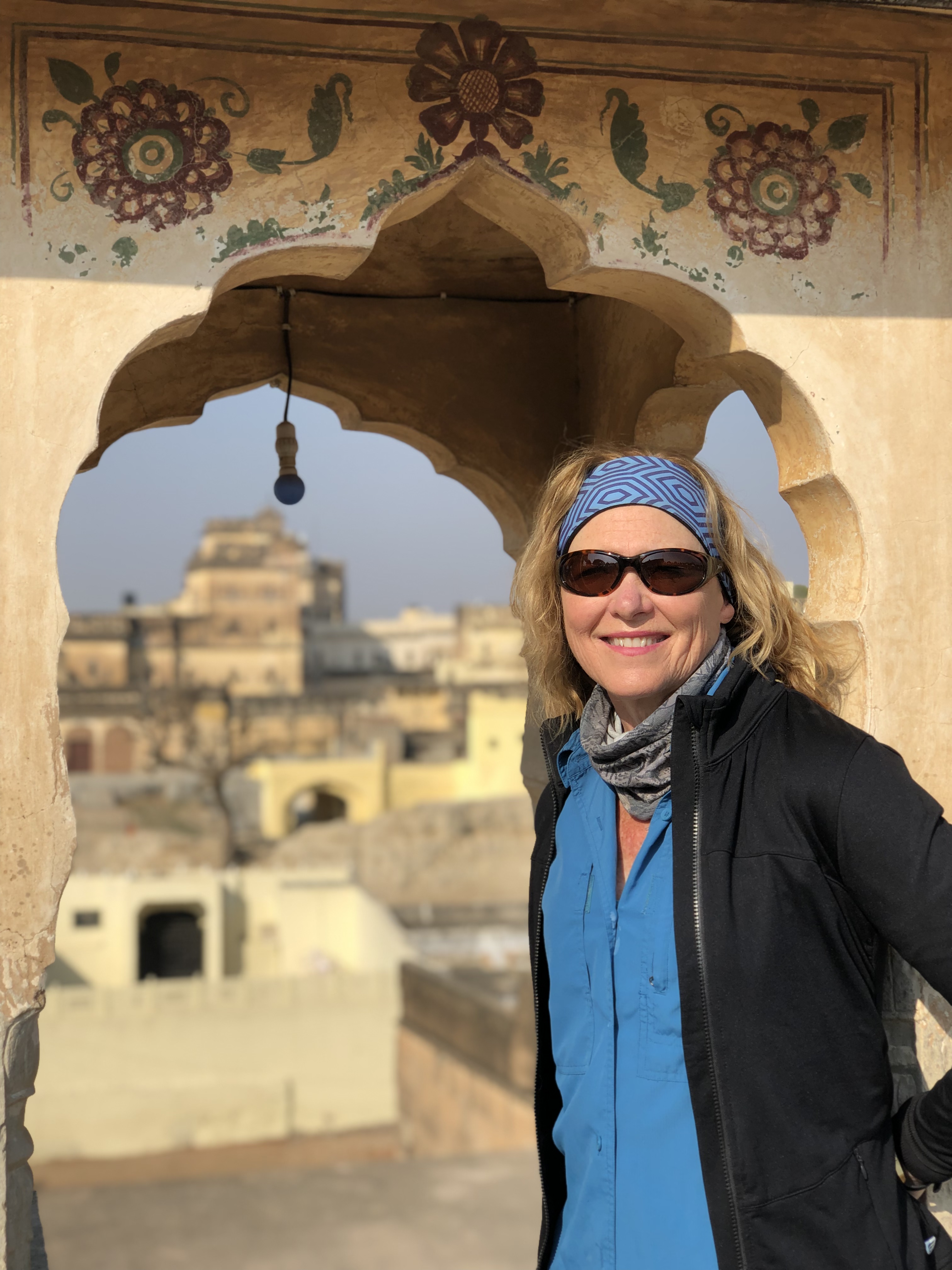
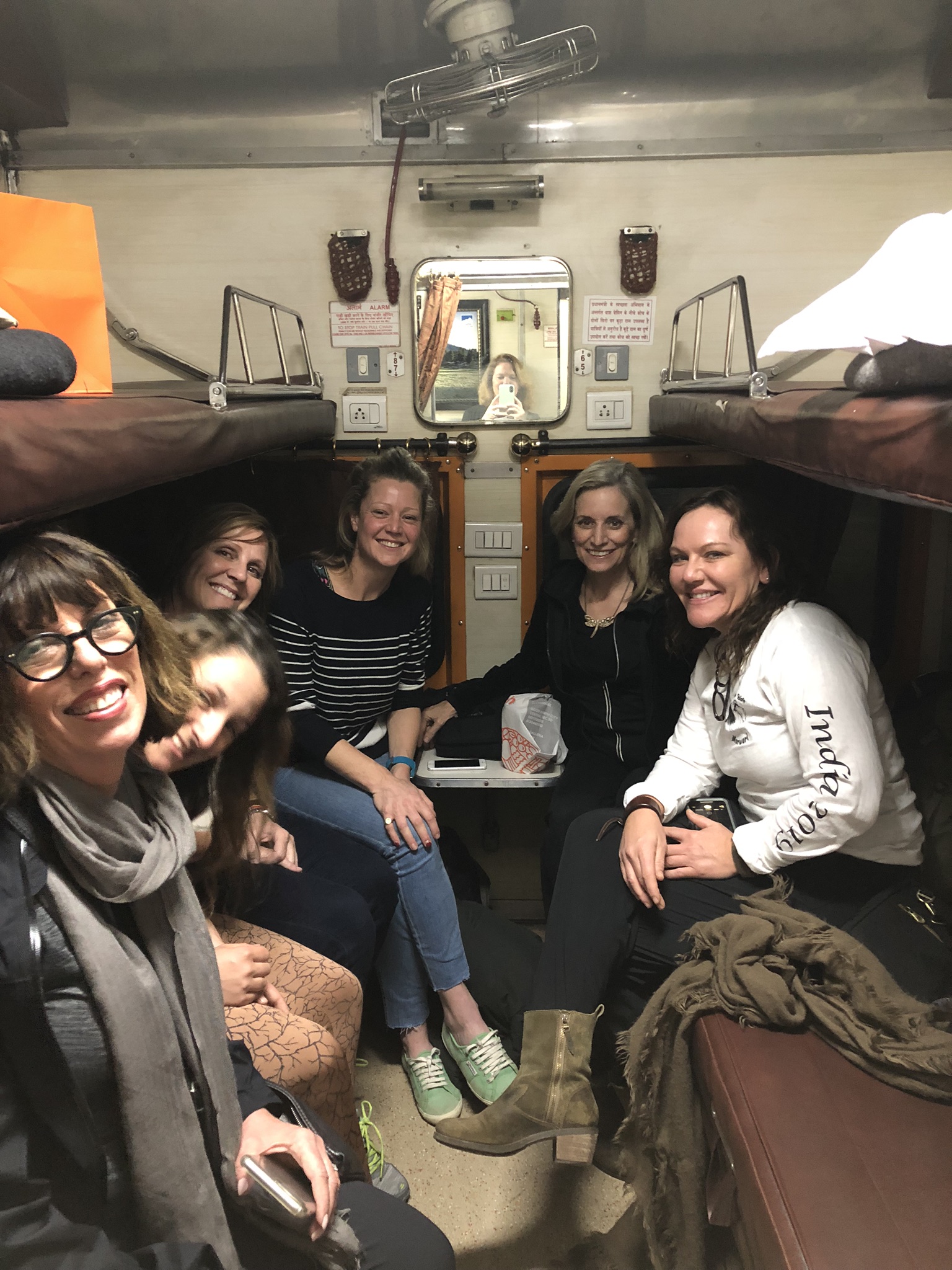
Awaiting us in Hanumangarh, a short distance from Ganganagar, was the Bhatner Horse Fair, a once-a-year festival to celebrate, compete, and market the famed Marwari breed indigenous to India and unlike any other breed worldwide. Missing our train would have meant missing the Fair and it was an event that we planned our entire Rajasthan riding safari around.
"We discovered that we were the main attraction."
The next morning, we arrived at the fair. It was the last day and while most of the events were completed, we discovered that we were the main attraction as they rarely had foreigners, and there were no other women there.

We were given the red-carpet treatment since we were accompanied by Raghuvendra Singh Dundlod, affectionately known as Bonnie, a nobleman of the Shekhawati clan and reputed to be the savior of the Marwari’s. He has dedicated his life to the promotion and protection of the breed which he considers the true ambassador of Rajput culture and heritage. We were followed by a beehive of fair attendees, drawn to us like honey, and even interviewed by the local media. It became clear that our presence held so much more value than just our own education and enjoyment; we could offer support to Bonnie’s cause through our words and interest, as well as in undertaking the week-long safari to showcase these beautiful steeds to his countrymen.
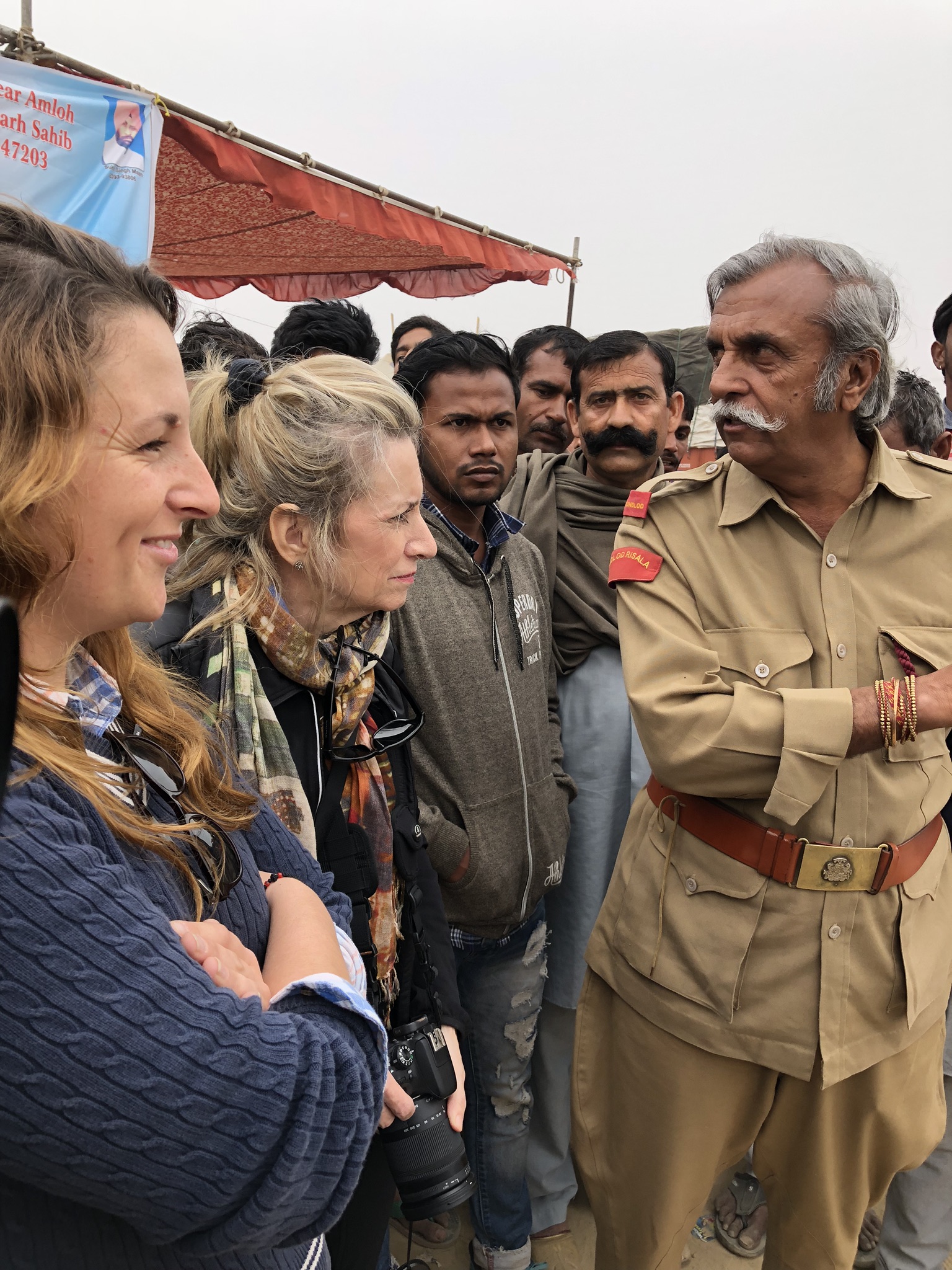
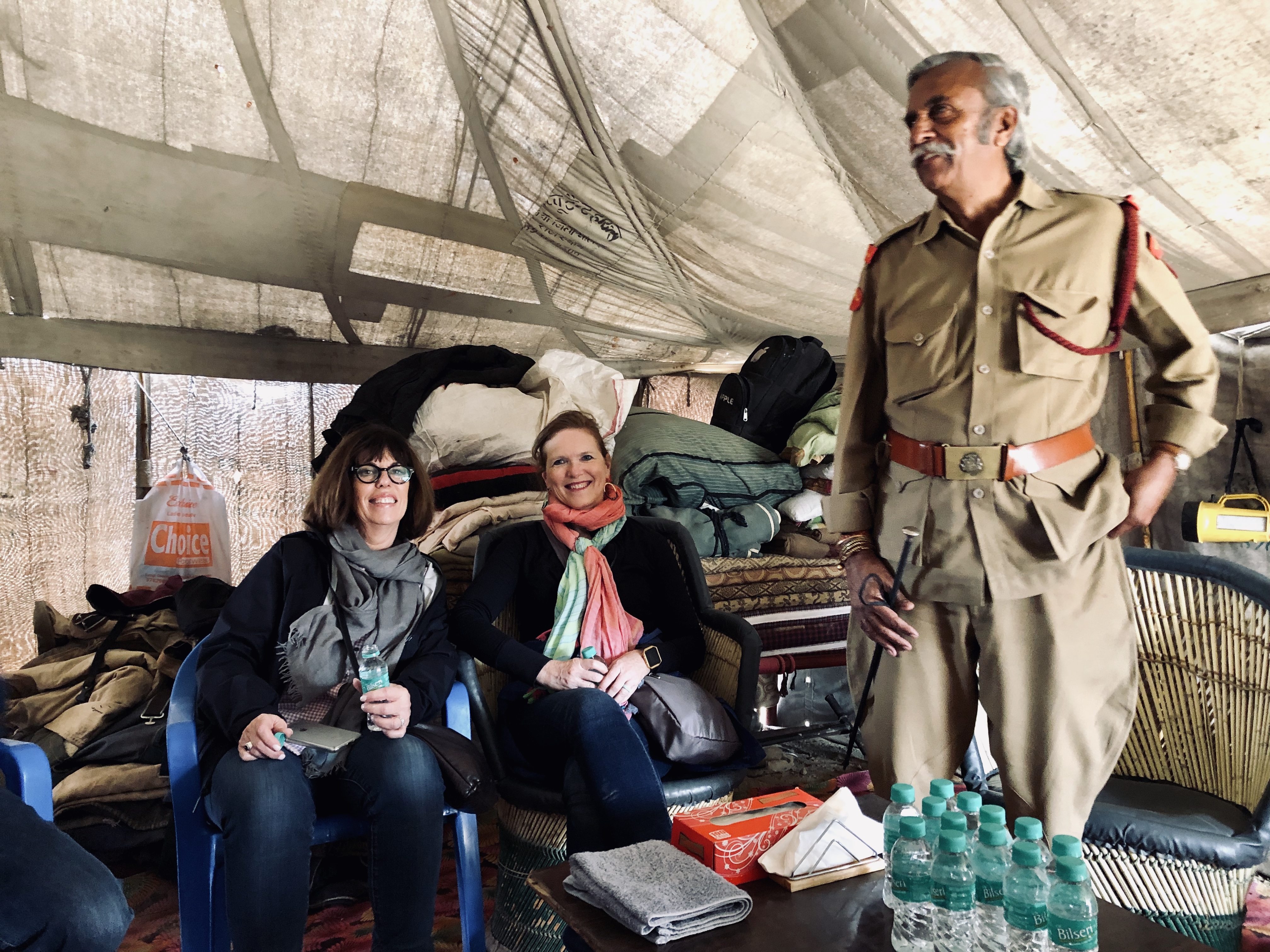
The next day we greeted our horses and mounted into traditional military saddles.

The horses were proudly adorned with cloth martingales baring the rich red and saffron colors of Dundlod Fort, and the ride began past sheep herds along the Indira Gandhi Canal. These majestic horses, with warrior spirits, known for their stamina and power were the perfect partners for our eight-day safari across 160 miles of desert. We rode through the heart of Rajasthan, across the Thar desert, far from the bustling cities of the Golden Triangle, now populated by robust crops of millet and mustard enabled by the newly built canal system.
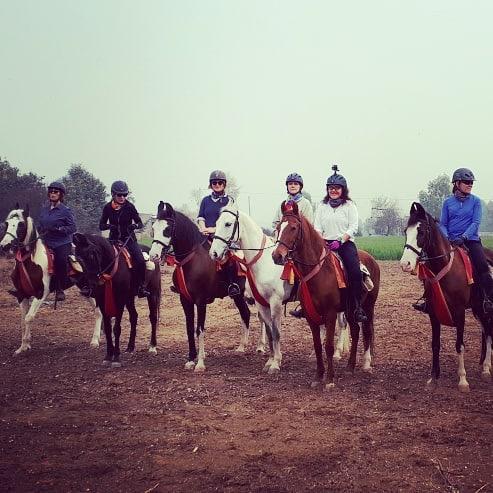
"These majestic horses, with warrior spirits, were the perfect partners for our eight-day safari."
The route was a new one as each year the progress of India’s roads, establishment of new agricultural fields and corresponding fences creates the need for a different trail. We passed through villages that had never been visited by foreigners. Women and children came rushing from all directions to shout “Hi” and “Hello” and shyly wave at us. We were followed for miles by young men on motorcycles whose English focused on the word “selfie” as they came armed with their cell phones to take pictures of this unusual parade of noble horses and white-skinned foreigners. We were welcomed guests wherever we traveled.
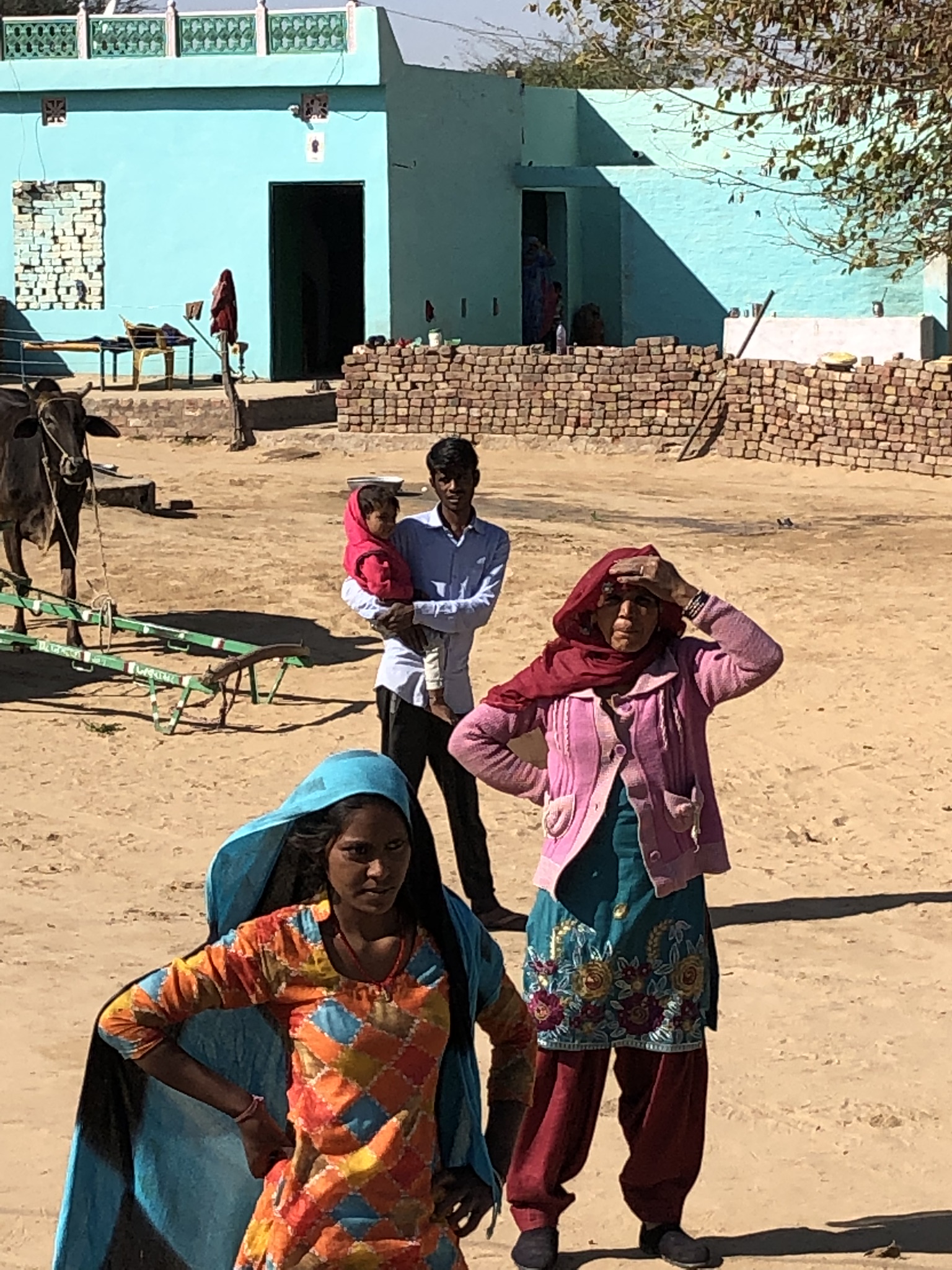
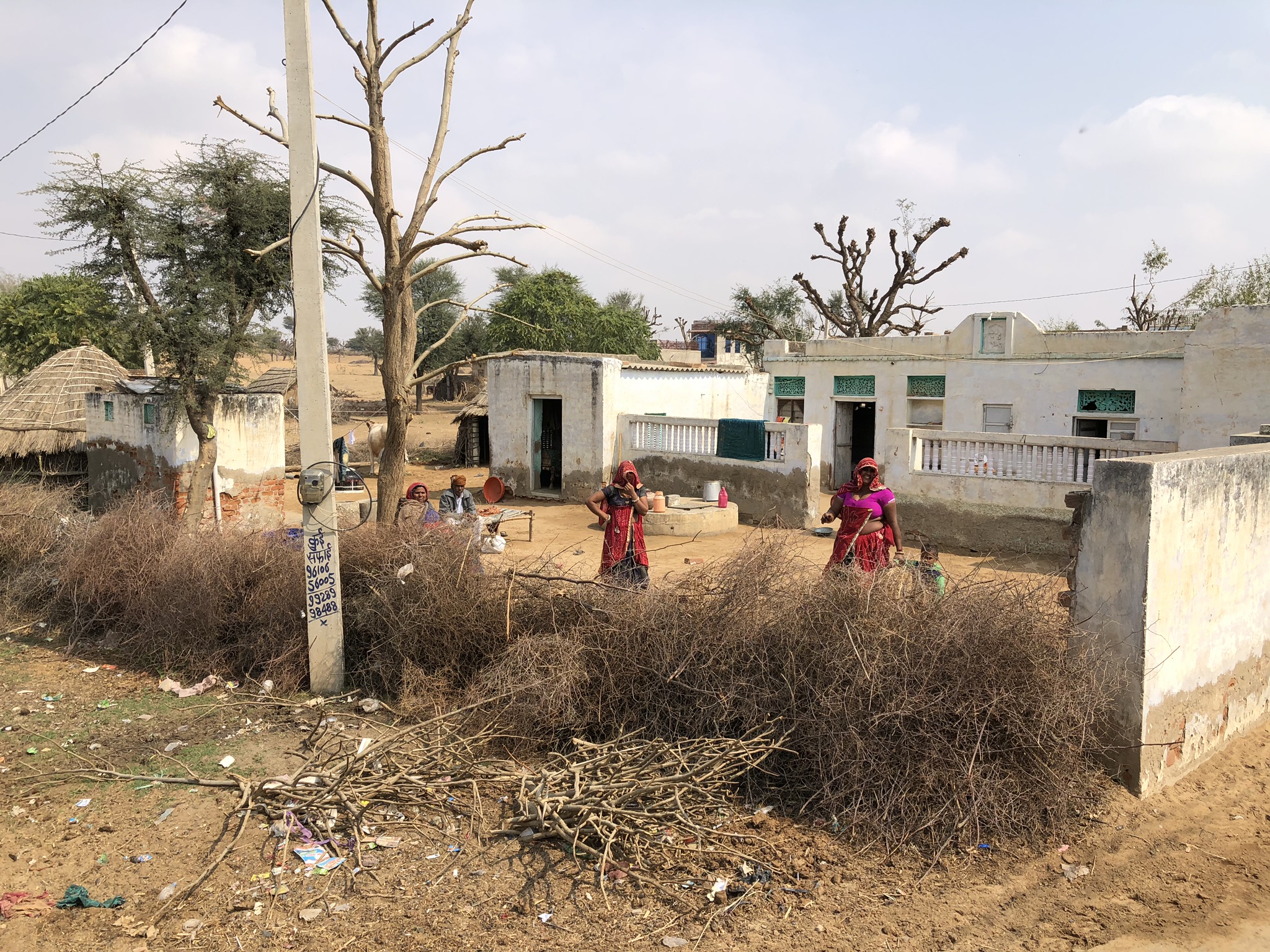
Our first night by the village of Raika Ki Dhani, we were greeted by dozens of villagers who came to watch us—they observed us sharing chai and popadum, a crispy tortilla-like bread spiced with pepper whose flavor snaps in your mouth just like the texture, as we sat around the fire and chatted about our day. Bonnie regaled us with entertaining tales from his many adventures such as the time they were almost attacked by misinformed villagers who thought his group was hunting their sacred antelope. The locals stood quietly, respectfully, yards away and crept ever closer like sandhill cranes, en masse one step at a time, until the camp staff intervened.
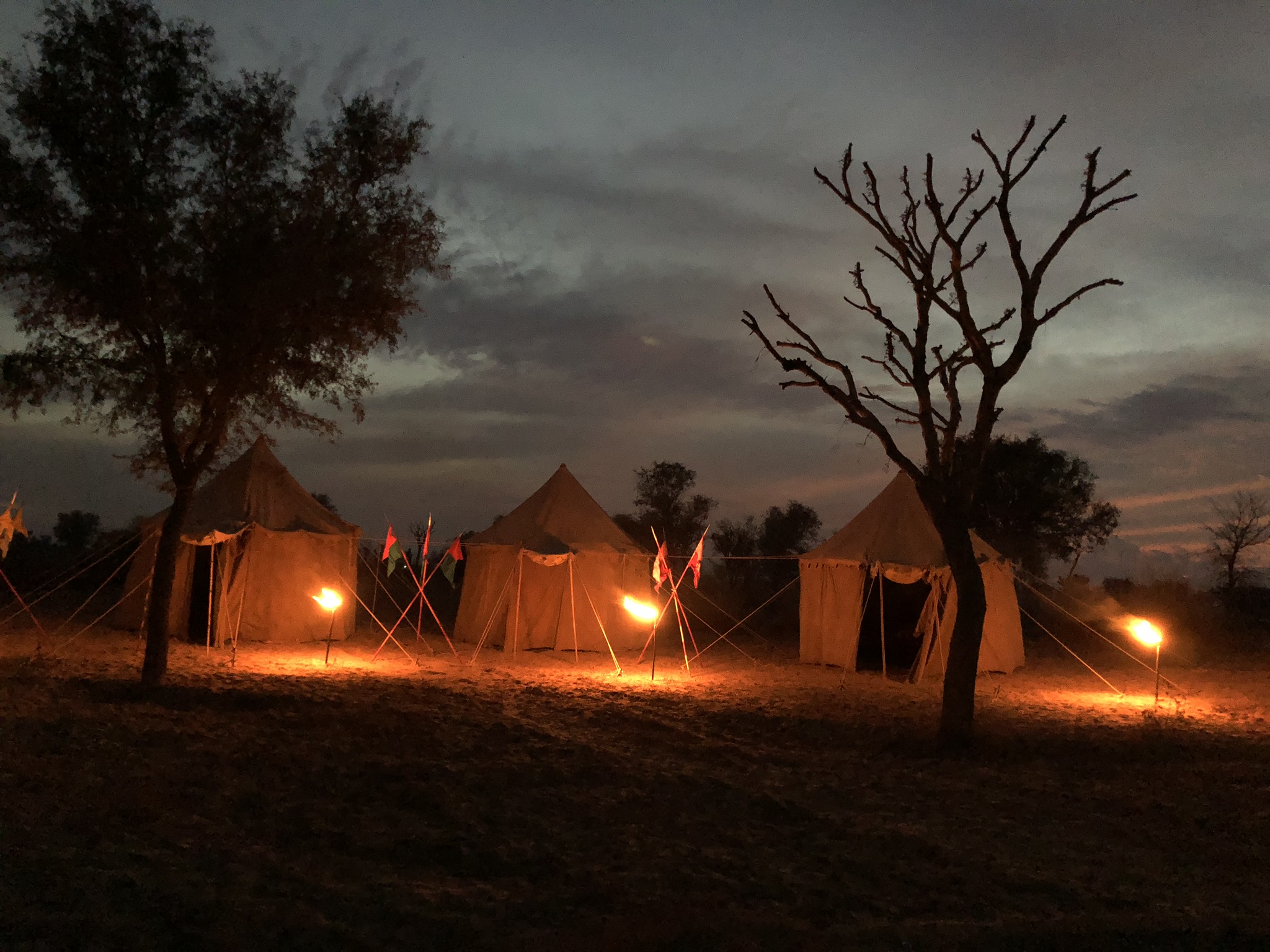
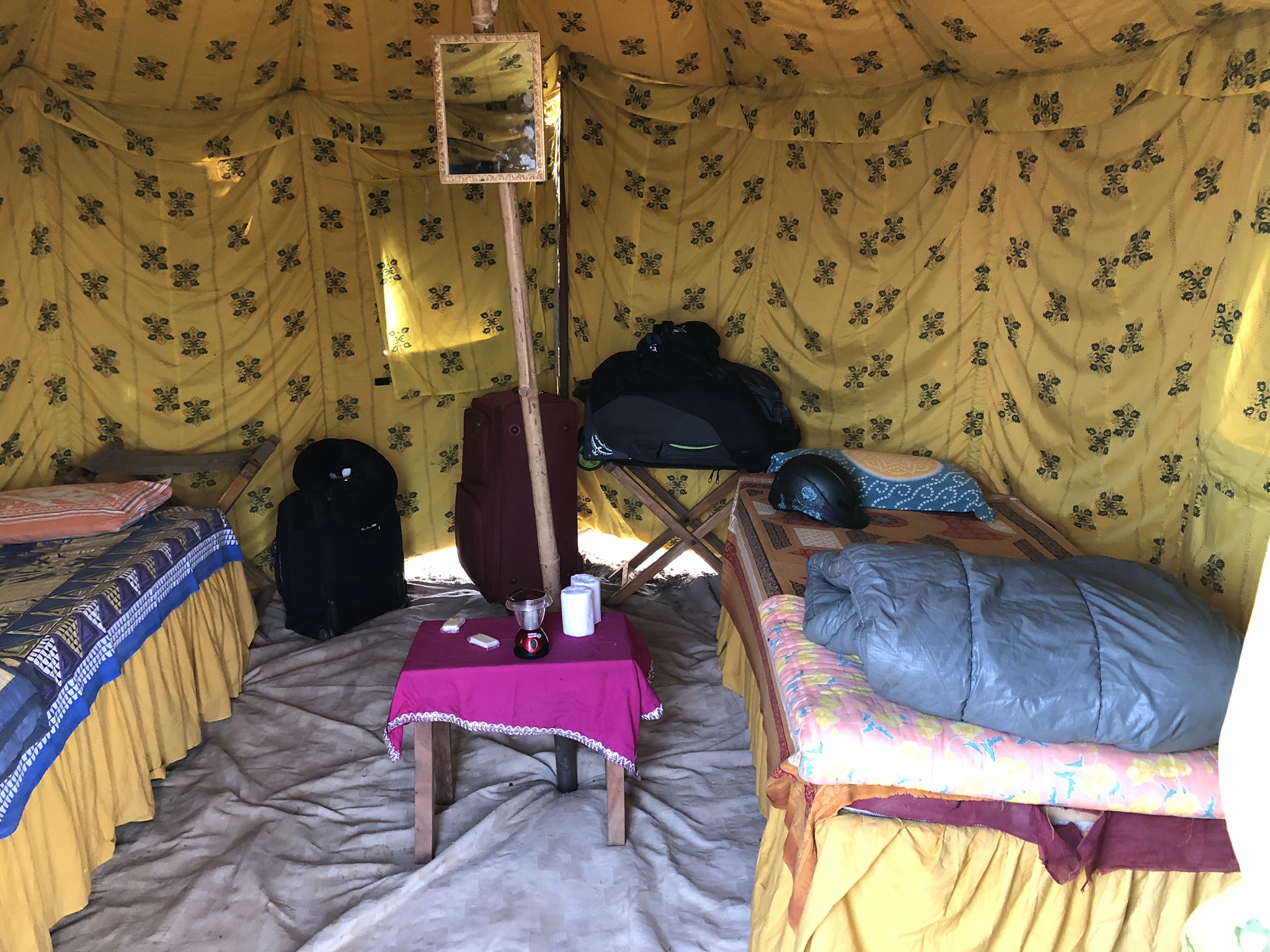
"We were all wearing smiles that transformed our souls and changed us forever."
In the morning, the son of the landowner on which we camped, fluent in English, came to us requesting our presence at their home in the village so we could meet their women. Delightedly, we accepted and drove to their brick and adobe home in the village. Many generations live together, and women join the family home of their husbands. When we arrived, there were a dozen people and when we left many dozens as villagers heard of our presence and joined the gathering. The women are beautiful, graceful, and shy but so friendly and welcoming. It didn’t take long to bridge the language barrier as they let us hold their children, shake their hand, and take many pictures together. We aren’t sure who enjoyed it more. We were all wearing smiles that transformed our souls and changed us forever by the time we left.
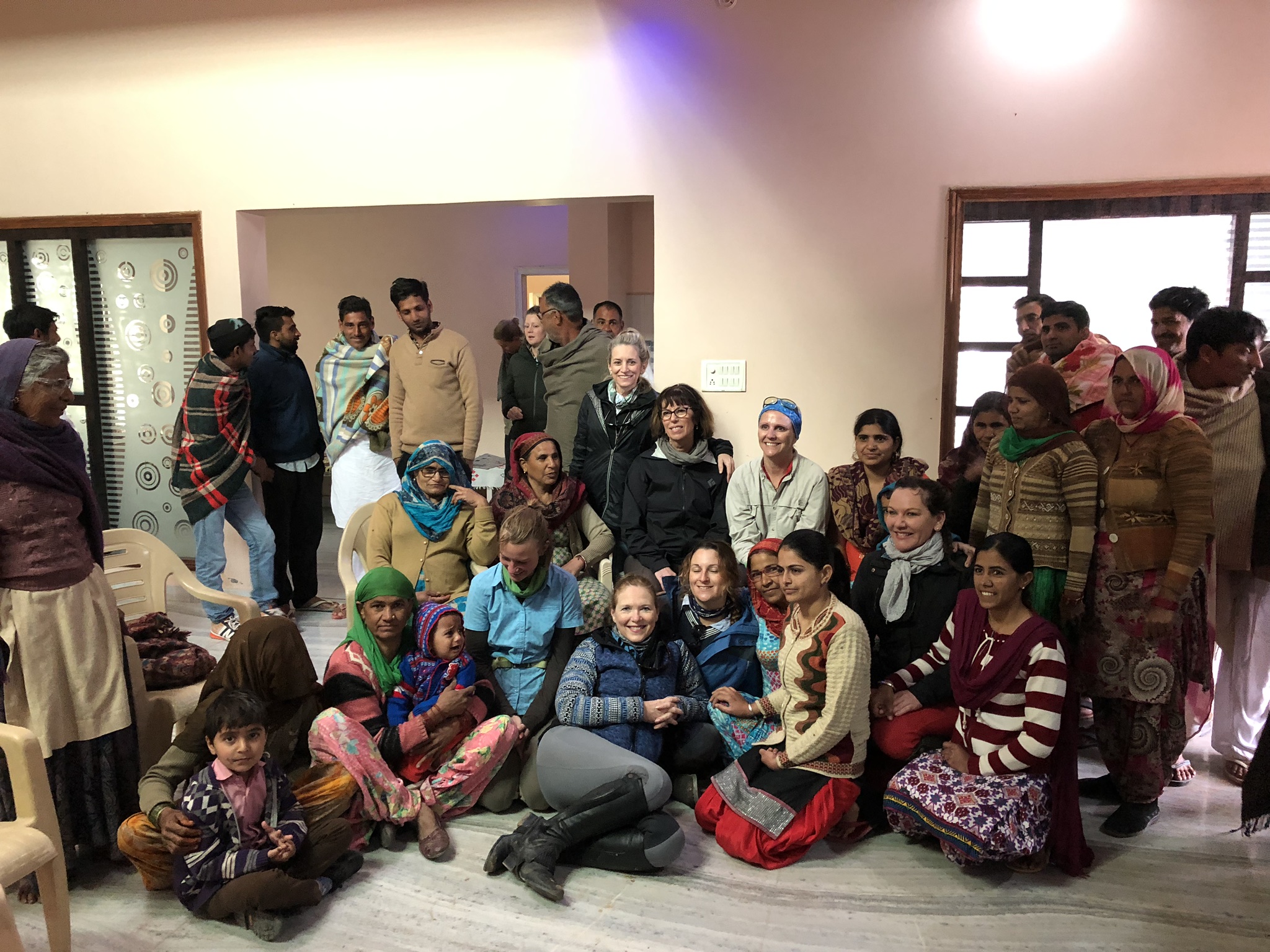
The ride was swift with many fast canters through the desert, lined up side by side on a sandy two-track, with every horse competing to be in front. Astride the powerful Marwari thundering through the desert is an experience in which your soul is freed, and you are in the moment, feeling like you are riding on the wings of warriors past. You hope it never stops and if it were up to Koel, my lovely Marwari mare, it wouldn’t. She is a successful endurance horse that can go forever and is pleased to show you her power and speed.
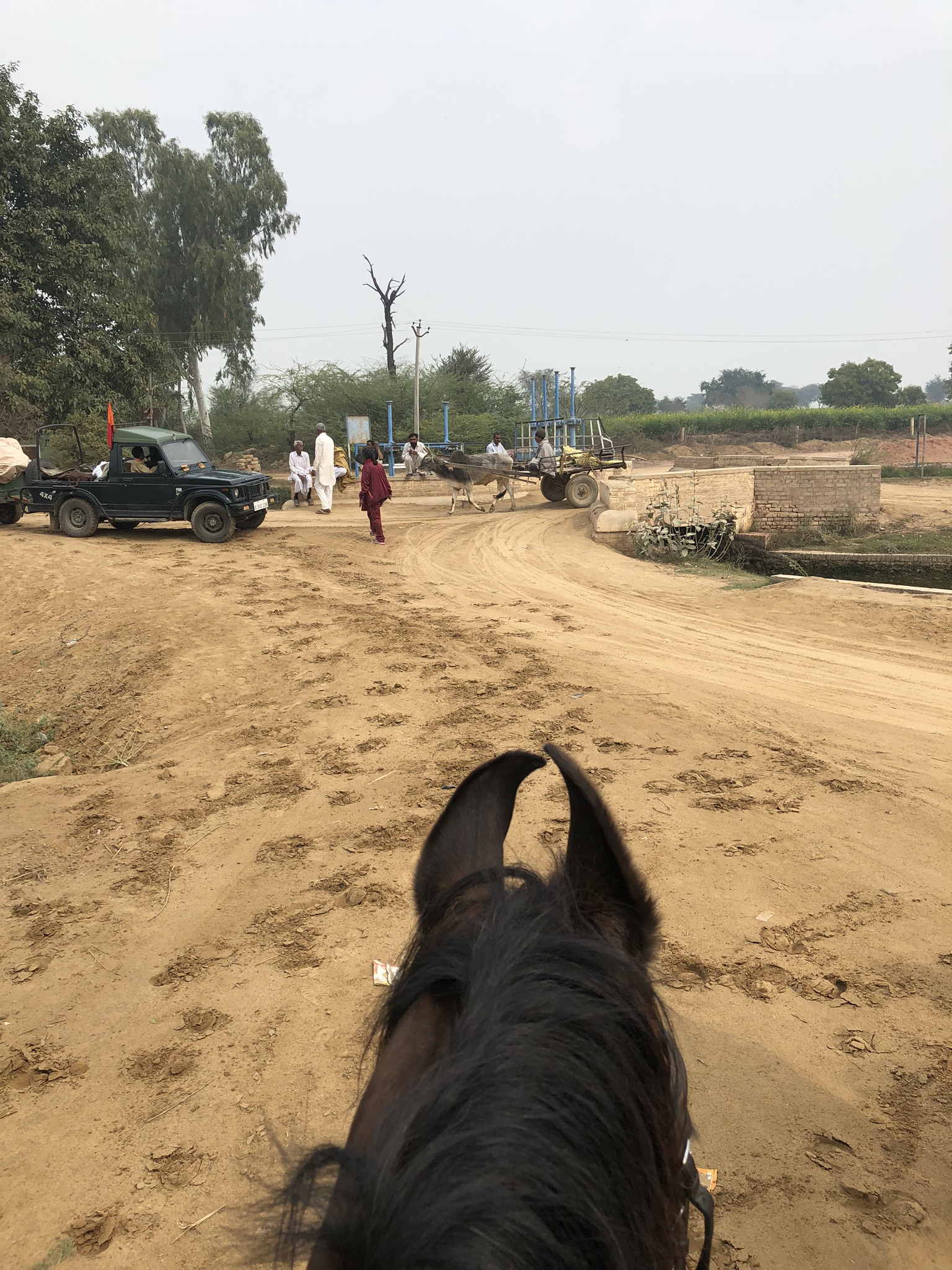
Animals are esteemed in India. Cows, dogs and even pigs are considered holy and roam freely throughout India, including the cities. Drivers don’t honk at them even though they honk at everything else. They feast on grass and garbage or food provided by shopkeepers or families. While those of us in first world countries drive through our suburban neighborhoods, expecting to see the standard home with two car garages and the glow of multiple TVs, as we passed each home in the village we found a courtyard with a camel which served as the beast of burden pulling carts of supplies or crops, a few water buffalo that provide milk, a dog or two and likely sheep or goats for milk and meat. These precious animals, so essential for survival, are well cared for in a country known for its poverty.
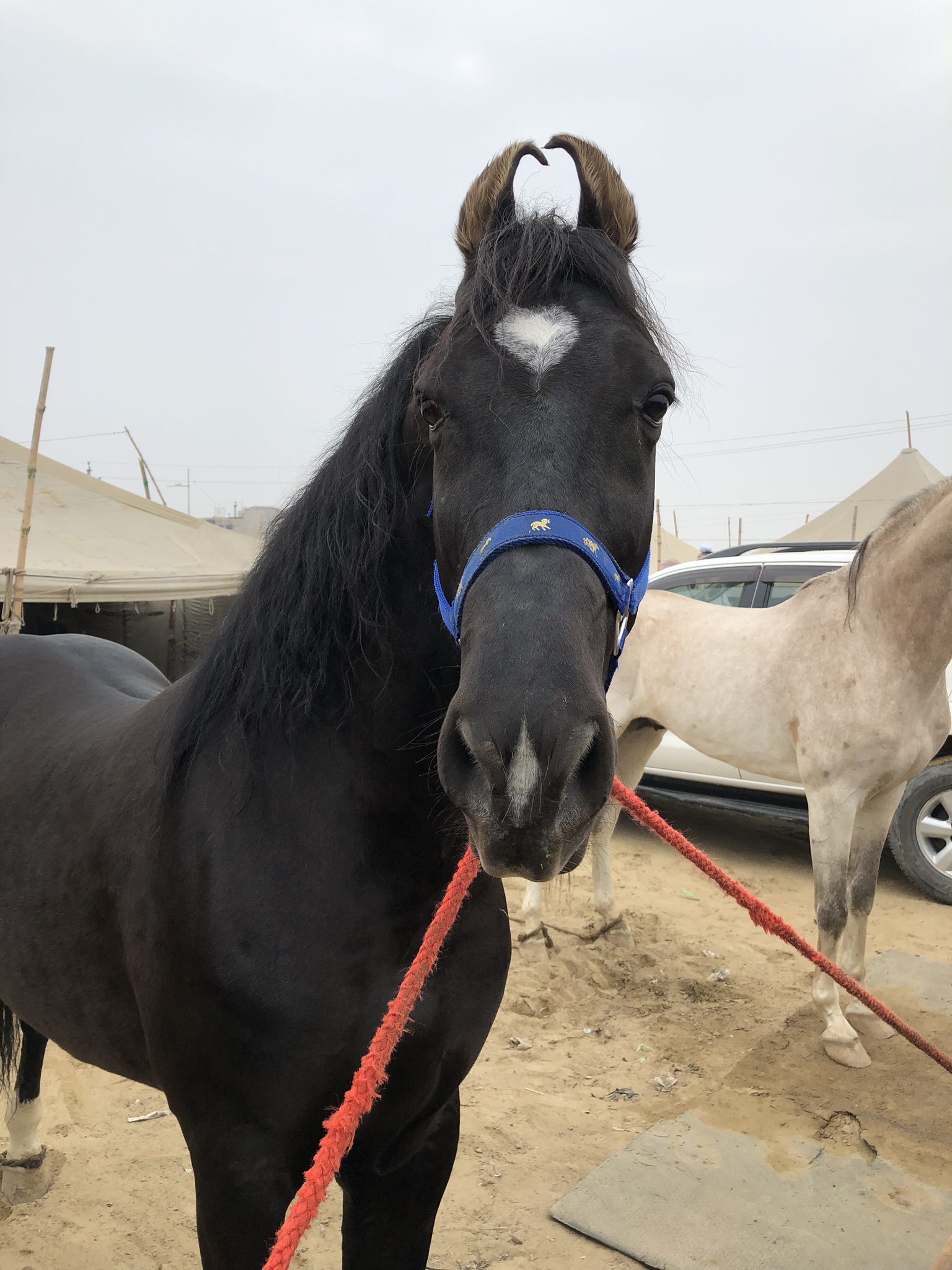
Life is simple in the villages. Days are repetitive and the work is essential –laundry, gathering fuel, cooking, and tending fields. Our presence in their villages provided some respite from the day to day existence. Often, a young boy would lead the way through town shooing goats, cows, or other animals out of our path and showing us the way to the community water trough so our horses could have a refreshing break, feeling pleased with his important role.
"The earthiness that filled the air was far preferable to the gagging stench and pollution of the city."
Unlike the cities with their explosion of people and constant stench created by the recipe of uncontrolled diesel fumes, sewage, and trash, the villages were peaceful and calm. Here the smells were not of diesel but of livestock. Camels, so common in courtyards and hitched to carts, are ruminants.

They chew and swallow their food into rumens where it is fermented, then burp it back up into their mouths later for more chewing. It smells a bit like a compost heap on a warm desert day. Cow patties are the most common source of fuel and they are being shaped by bare hands, then dried for use, usually within the courtyard or sometimes on the roof. Inexplicably, these smells weren’t offensive as they seemed harmonious with the way of life and the use of the land and its resources. For this Midwestern equine enthusiast, the earthiness that filled the air was far preferable to the gagging stench and pollution of the city.
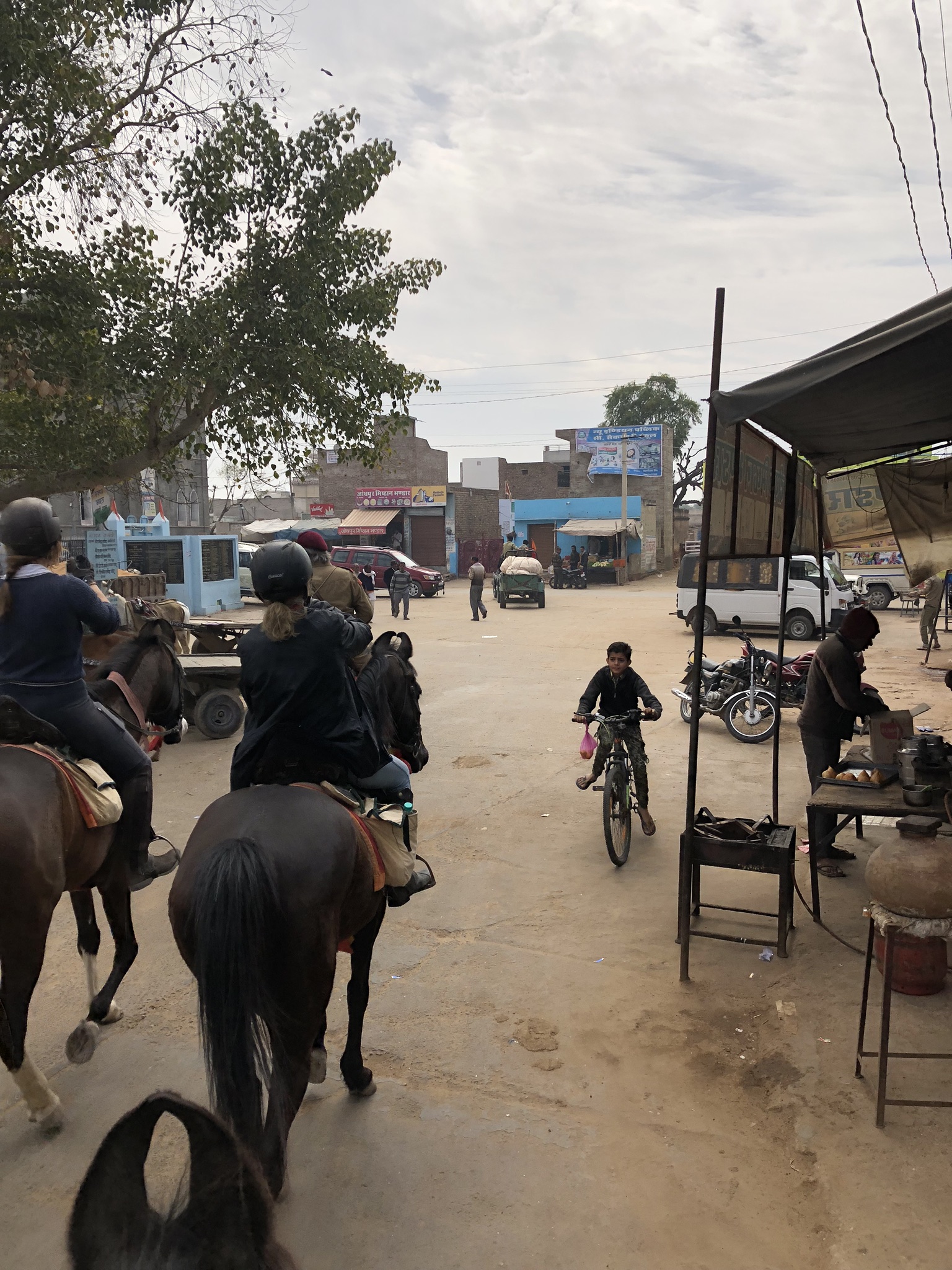
We rode for 6-8 hours a day stopping for a break mid-day for lunch and a rest, avoiding the hottest sun of the day. Just before lunch, Bonnie’s staff raced ahead of us in the “gypsy” jeep to set up a small camp, with chairs and sleeping pads and to prepare the food, a buffet of vegetarian delicacies such as dal and curry flavored vegetables with steamed rice and endless chapatis. We were reliably greeted by villagers or passers-by, a camel driver, or young lads on their bikes, as we rested. Our biggest challenge was in finding an appropriate and private spot for a comfort break without being observed.
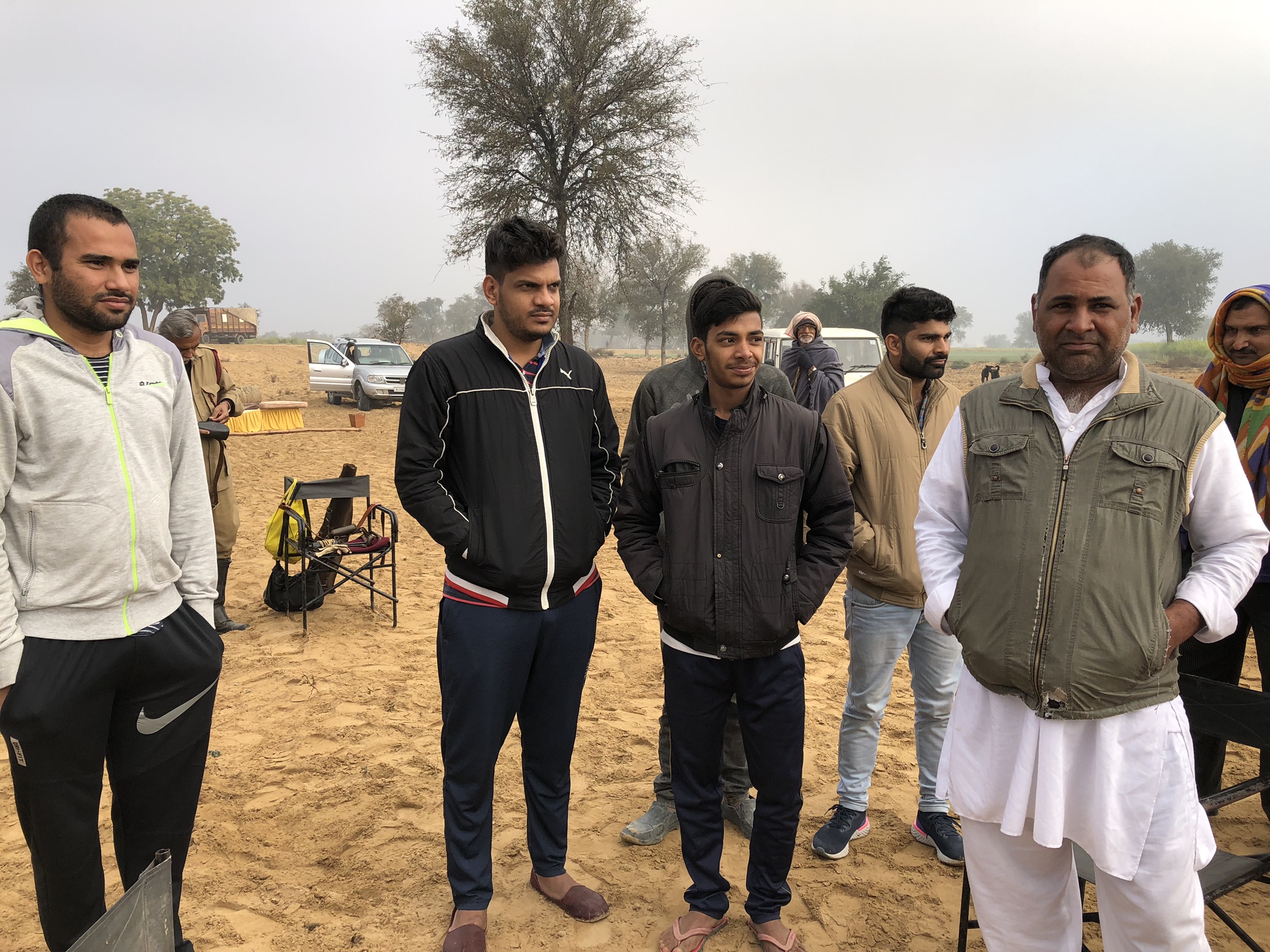
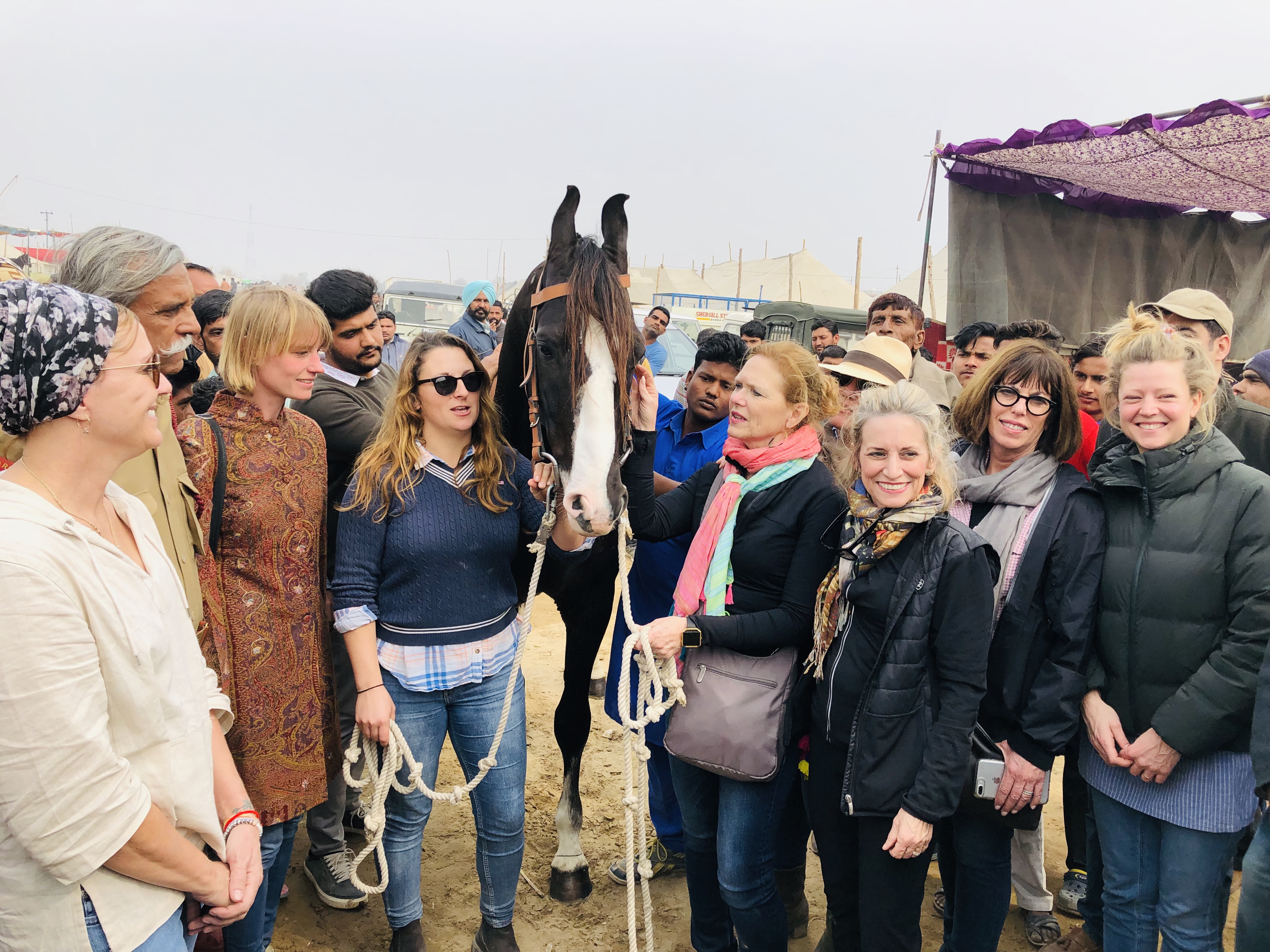
"The future of the Marwaris has become our new cause."
Our eight days through the desert was not a ride for the inexperienced. For those experienced riders who have come to believe they have tried it all, this ride surpasses expectations—not just because of the majesty of the Marwari’s but for the combination of culture, history, and riding which is unparalleled. I have worked up to this event by riding through other countries from Europe to Africa and the magic of this ride transcends them all.
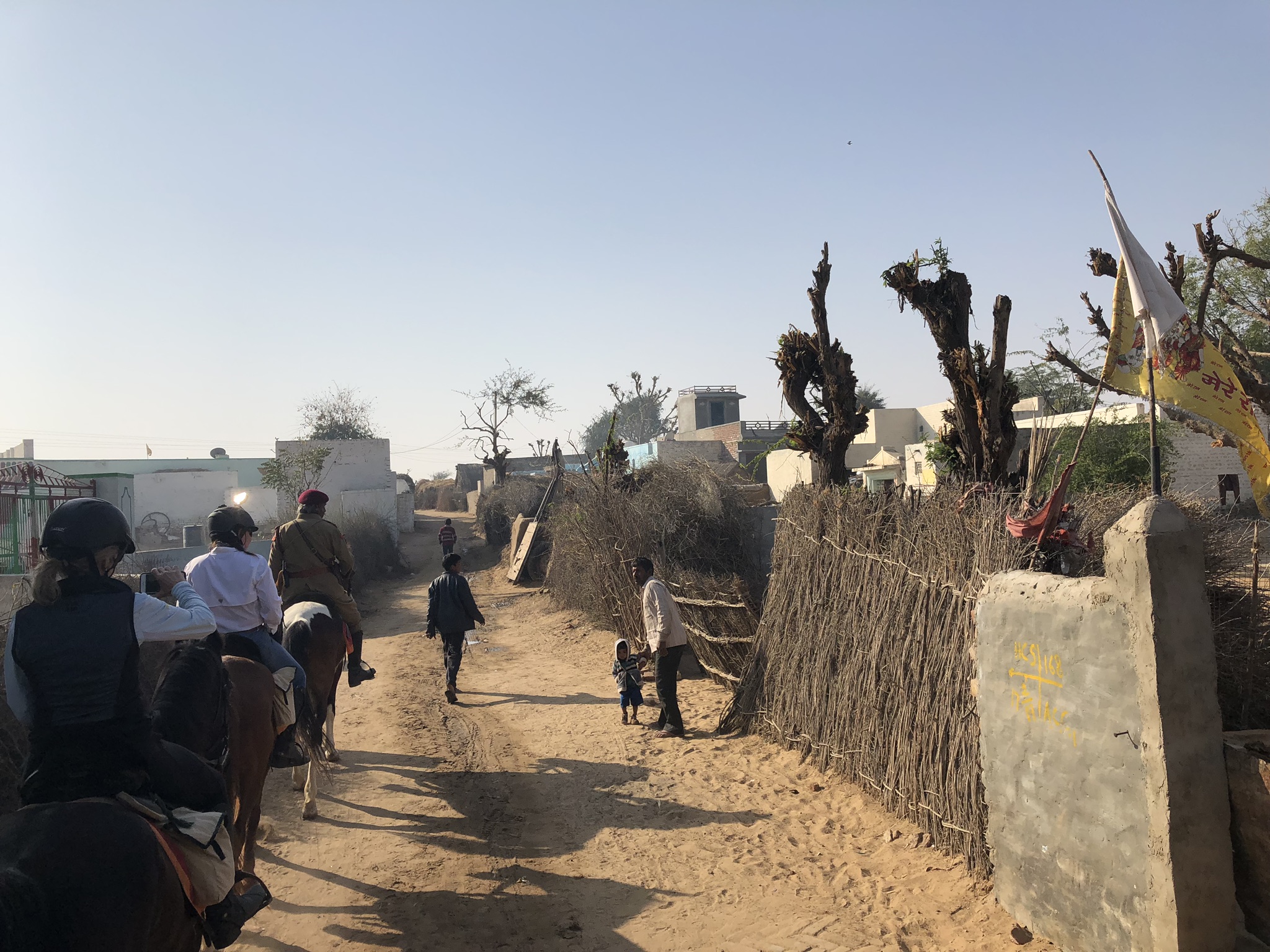
The Marwaris, which drew us to India like snake charmers beckoning cobras, were everything we expected and more. We learned that they are banned from exportation which is leading to declines in the quality and popularity of the breed. The future of the Marwaris has become our new cause as we have so much respect for these amazing animals.
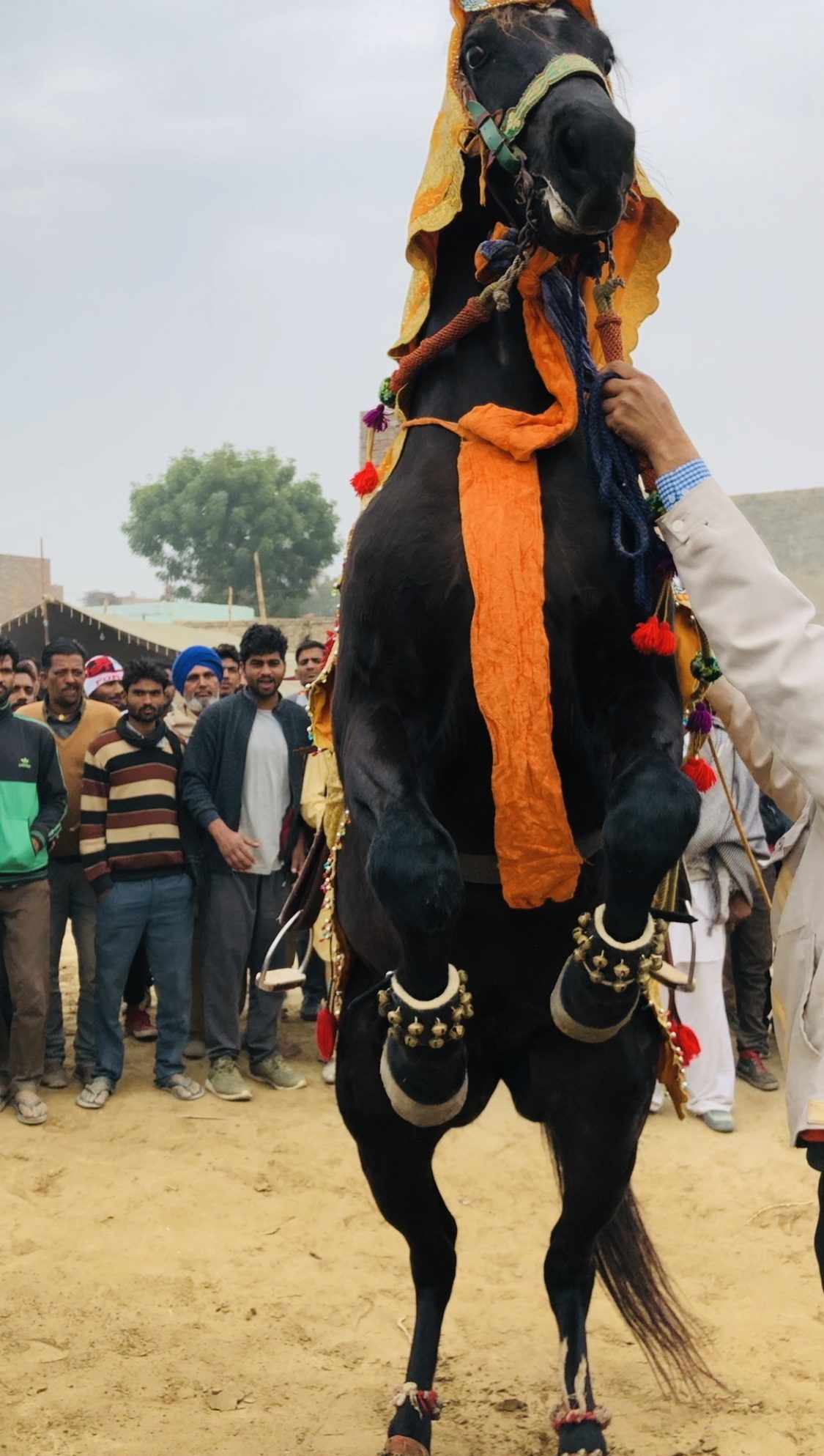
The days included challenge and leisure; hardship and comfort; and speed and stillness which have come to define India to me.

It is a country of contrasts—from city to village; from western dress to traditional kurtas and saris; from Muslim to Hindu; and from ancient to modern buildings and customs. It is a country with many possibilities and it was exciting to experience first-hand the range of the country’s legacy and promise for its future.
Margaret Reynolds is a speaker, author, and advisor to organizations on improving business performance and increasing revenue growth. She is an avid competitive trail rider, winning back to back National Championships with NATRC in 2017 and 2018. Every year she and her adventurous friends find a new country to explore on horseback. mreynolds@breakthroughmaster.com; https://www.breakthroughmaster.com/
Feature image: Group send-off at Bonnie's Dunlod Fort
Introducing The Outdoor Voyage
Whilst you’re here, given you believe in our mission, we would love to introduce you to The Outdoor Voyage - our booking platform and online marketplace which only lists good operators, who care for sustainability, the environment and immersive, authentic experiences. All listed prices are agreed directly with the operator, and we promise that 86% of any money spent ends up supporting the local community that you’re visiting. Click the image below to find out more.




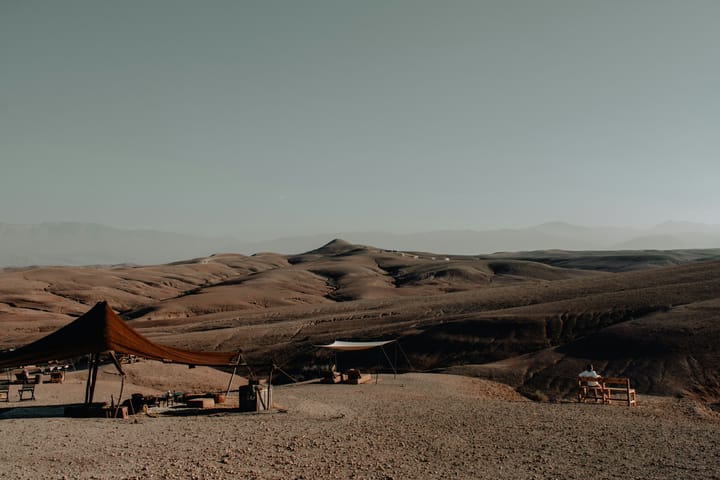

Comments ()